Temperature Lithium
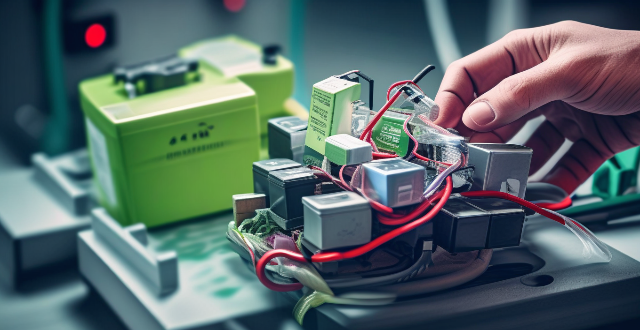
Can lithium batteries be recharged ?
Lithium batteries can be recharged, and the process involves the movement of lithium ions between the positive and negative electrodes. Proper charging practices ensure their longevity and safety.

What is the lifespan of a lithium battery ?
The lifespan of a lithium battery is affected by various factors such as the type of battery, usage patterns, and environmental conditions. In general, most lithium batteries have a lifespan of 2-3 years or 300-500 charge cycles, whichever comes first. However, this can vary significantly based on the specific application and usage patterns. Different types of lithium batteries have different lifespans. For example, Lithium-ion batteries typically have a longer lifespan than Lithium-polymer batteries. Additionally, some newer types of lithium batteries, such as solid-state batteries, may have even longer lifespans than traditional lithium-ion batteries. How you use your lithium battery can also affect its lifespan. For example, if you frequently charge your battery to 100% and then discharge it completely, this can shorten its lifespan compared to if you only charged it to 80% and discharged it to 20%. Similarly, if you frequently expose your battery to high temperatures or cold temperatures, this can also shorten its lifespan. Finally, the environmental conditions in which your lithium battery is stored and used can also affect its lifespan. For example, if you store your battery in a hot or humid environment, this can shorten its lifespan compared to if you store it in a cool, dry environment. Similarly, if you frequently expose your battery to extreme temperatures or humidity levels while using it, this can also shorten its lifespan. To maximize the lifespan of your lithium battery, there are several things you can do: * Avoid exposing your battery to extreme temperatures or humidity levels. * Try to keep your battery's charge level between 20% and 80% as much as possible. * Use a high-quality charger that is designed specifically for your type of lithium battery. * If possible, try to use your device's built-in power management features to help regulate charging and discharging patterns.

How can I maximize the lifespan of my lithium battery ?
Lithium batteries are widely used in various devices, from smartphones and laptops to electric vehicles. To ensure that your lithium battery lasts as long as possible, it's essential to follow some best practices for charging, storing, and using the battery. Here are some tips to help you maximize the lifespan of your lithium battery: 1. Avoid Overcharging 2. Maintain Proper Charging Levels 3. Store at Optimal Temperatures 4. Manage Battery Use 5. Software Updates 6. Physical Care
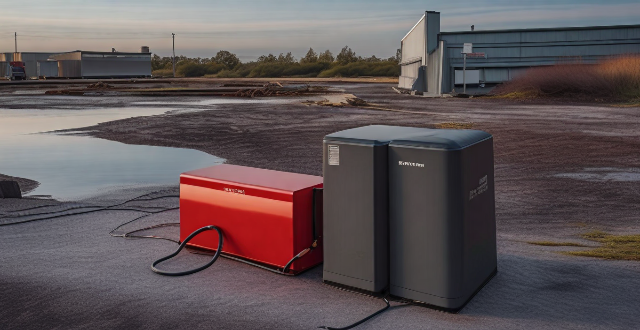
What are the advantages and disadvantages of using lithium iron phosphate batteries as power batteries ?
Lithium iron phosphate batteries are a popular choice for power batteries due to their longer lifespan, higher safety, environmental friendliness, and lower cost compared to other types of lithium-ion batteries. However, they also have some disadvantages such as lower energy density, slower charging speed, temperature sensitivity, and limited availability. Despite these drawbacks, lithium iron phosphate batteries remain a reliable and efficient option for many applications.
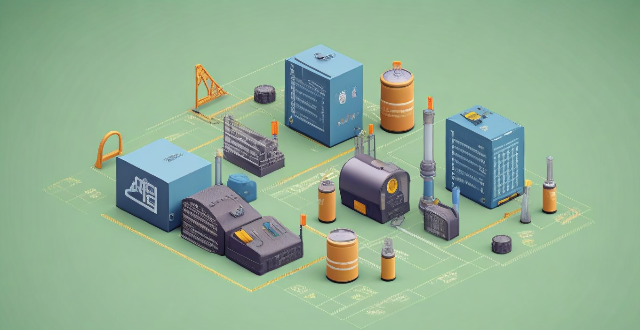
How do lithium batteries work ?
Lithium batteries work by using the chemical reaction between lithium ions and other materials to generate electricity. They consist of a cathode, anode, electrolyte, and separator. During charging, electrons flow from the cathode to the anode through an external circuit, causing lithium ions to move towards the anode and be stored there. During discharge, lithium ions move back to the cathode, releasing electrons in the process that provide power to a device. Lithium batteries have a high energy density, long lifespan, low self-discharge rate, and are used in various applications.
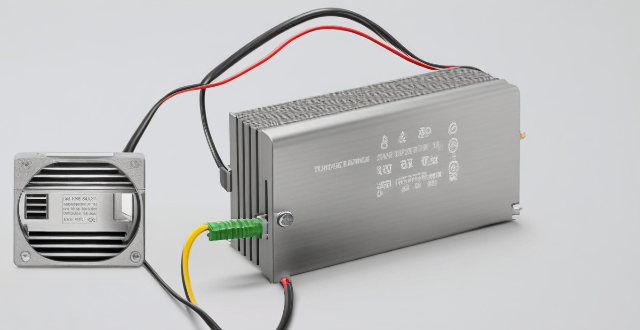
What are the benefits of using lithium batteries ?
Lithium batteries offer numerous benefits, including highLithium batteries offer numerous benefits, including highspan, low maintenance, safety They are ideal for portable electronics, electric vehicles, backup power systems, and more.
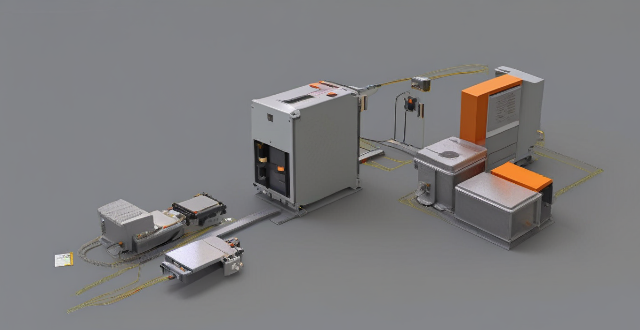
How does a lithium-ion power battery work ?
Lithium-ion power batteries work through the movement of lithium ions between the anode and cathode during charging and discharging, generating an electrical current to power devices. The process involves intercalation and deintercalation of ions in the electrodes, facilitated by an electrolyte and separator. Safety mechanisms and lifespan are key considerations for these widely used batteries.

Are lithium batteries safe to use ?
Lithium batteries have become an integral part of modern technology, powering a wide range of devices from smartphones to electric vehicles. However, concerns about their safety have been raised due to incidents of overheating and fires. In this article, we will explore the safety aspects of lithium batteries and provide guidance on how to use them safely. One of the main safety concerns with lithium batteries is the risk of overheating and catching fire. This can occur if the battery is damaged, improperly charged, or exposed to extreme temperatures. When a lithium battery overheats, it can cause a chemical reaction that leads to thermal runaway, which is a self-sustaining process that can result in a fire or explosion. Another safety concern associated with lithium batteries is the potential for chemical hazards. The chemicals used in lithium batteries can be toxic and harmful to human health if they are ingested, inhaled, or come into contact with skin or eyes. It is important to handle these batteries with care and dispose of them properly to avoid any potential risks. To minimize the risks associated with lithium batteries, it is essential to follow some basic safety tips: 1. Use genuine products from reputable manufacturers to ensure that the battery meets safety standards. 2. Avoid overcharging by not leaving your device charging unattended and avoiding using cheap chargers that may overcharge the battery. 3. Store your lithium batteries in a cool, dry place away from direct sunlight and extreme temperatures. 4. Inspect your batteries regularly for any signs of damage or swelling, and replace them if necessary. 5. Dispose of your old lithium batteries properly by taking them to a recycling center or following the manufacturer's instructions. 6. Follow the manufacturer's guidelines for your specific device and battery. 7. Keep lithium batteries out of reach of children as they may pose a choking hazard. 8. Use protective cases or covers for your devices to prevent damage to the battery. 9. Avoid dropping or mishandling your device as this can damage the battery and increase the risk of overheating. 10. Seek professional help if you notice any issues with your battery, such as swelling or leakage. In conclusion, while there are some safety concerns associated with lithium batteries, following these safety tips can help reduce the risks and ensure that you use them safely. By being cautious and responsible, you can enjoy the benefits of these powerful batteries without compromising your safety.

How do lithium batteries compare to other types of batteries ?
The text compares lithium batteries (Li-ion and LiPo) with other types of batteries in terms of energy density, charge retention, lifespan, charging speed, safety, cost, and environmental impact. Lithium batteries are found to have high energy density, low self-discharge rates, a longer cycle life, and can be charged quickly. However, they are more expensive upfront and pose specific safety risks. Other batteries may be initially cheaper but require more frequent replacements and have different safety concerns. Overall, the advantages of lithium batteries often outweigh their drawbacks, making them the preferred choice for modern portable electronics and large-scale applications.

How can I properly dispose of a lithium battery ?
Disposing of lithium batteries requires special attention due to their chemical composition and potential environmental impact. Here's a step-by-step guide on how to do it right: 1. Find a Recycling Center: Look for local recycling centers or facilities that accept lithium batteries. Many cities have designated drop-off points or specific days for battery recycling. Automotive stores and electronics retailers also offer recycling services. 2. Prepare the Battery: Fully discharge the battery before disposal to reduce the risk of accidental fires during transport or at the recycling facility. If the battery has damage or exposed terminals, wrap it in plastic or place it in a sealed container to prevent short circuits. 3. Transport Safely: Keep the battery cool and separate from other waste. Never mail lithium batteries as they are classified as hazardous materials and prohibited from being sent through the postal service. 4. Drop Off the Battery: Double-check the recycling center's policies on lithium batteries before dropping off. Ask about the recycling process to understand the full lifecycle. 5. Consider Alternatives: Use rechargeable batteries whenever possible to reduce the number of batteries you dispose of. When purchasing new devices, consider those with more easily recyclable or biodegradable battery options. By following these steps, you ensure that your lithium batteries are recycled responsibly, minimizing their environmental impact and contributing to sustainable practices.

What factors affect the performance of a lithium battery ?
The performance of a lithium battery can be affected by temperature, charging rate, discharging rate, depth of discharge, age, and manufacturing quality. High temperatures and fast charging can damage the battery and reduce its lifespan, while low temperatures and slow charging can prolong the battery's lifespan but may not provide enough power for high-demand devices. High discharging rates can cause the battery to heat up and decrease in performance, while low discharging rates can prolong the battery's lifespan but may not provide enough power for high-demand devices. High DoD can lead to increased stress on the battery and a shorter lifespan, while low DoD can help prolong the battery's lifespan but may not be practical for devices that require a lot of power. Older batteries will have decreased capacity and performance, while newer batteries will have better performance and capacity. High-quality manufacturing processes can result in better performing batteries with longer lifespans, while low-quality manufacturing processes can result in poor performing batteries with shorter lifespans.

Can you explain how battery technology works in electric cars ?
Battery technology is a crucial component of electric cars, determining their range, performance, and efficiency. The basic components of a battery pack include the anode, cathode, electrolyte, and separator. During charging, lithium ions move from the cathode to the anode via the electrolyte, while discharging involves the movement of lithium ions in the opposite direction. Key factors affecting battery performance include capacity, energy density, power density, cycle life, and temperature management. By optimizing these aspects, manufacturers aim to improve the overall capabilities of electric vehicles.

How does temperature control affect food safety ?
This text discusses the impact of temperature control on food safety, emphasizing the risks associated with improper temperature management and the benefits of maintaining appropriate temperatures. It highlights the danger zone for bacterial growth, spoilage due to mold and yeast, and toxin production from bacteria. The article also outlines best practices for temperature control in refrigeration, freezing, cooking, reheating, handling, and storage to ensure food safety.

Why is temperature control important in food storage and preparation ?
Temperature control is crucial in food storage and preparation to ensure safety, quality, and longevity of food products. It prevents bacterial growth, avoids toxin production, maintains flavor and texture, preserves nutrients, extends shelf life, reduces waste, saves energy, and reduces environmental impact. Proper temperature control helps to enjoy delicious and healthy meals while minimizing the risk of foodborne illnesses and food waste.

What are some common applications for lithium batteries ?
Lithium batteries are widely used in various applications due to their high energy density, long lifespan, and lightweight nature. They power portable electronics like smartphones, laptops, and gaming devices; electric vehicles including cars, motorcycles, and bicycles; energy storage systems for solar power and backup supplies; medical devices such as pacemakers and monitors; aerospace and defense technologies like satellites and drones; tools and devices including power tools and wireless communications; wearable technology like smartwatches and AR/VR headsets; and outdoor and recreational equipment such as camping gear and flashlights. These batteries have transformed how we use our gadgets and vehicles, making them more efficient, lighter, and longer-lasting.

What is the ideal room temperature for optimal sleep ?
The ideal room temperature for optimal sleep is between 60-67°F (15-19°C). This range is considered to be the most conducive for a comfortable and restful sleep. The reasons for this include regulation of body temperature, improved REM sleep, reduced wakefulness, and comfort and relaxation. To achieve the ideal room temperature, consider using an air conditioner or fan, adjusting your bedding, dressing appropriately, and using a programmable thermostat.

What are the benefits of using lithium-ion batteries in renewable energy systems ?
The benefits of using lithium-ion batteries in renewable energy systems include high energy density, long lifespan, low maintenance, fast charging, and high efficiency. These advantages make them an ideal choice for storing and distributing renewable energy.

Are there any new developments in non-toxic, environmentally friendly batteries ?
The development of non-toxic and environmentally friendly batteries is a crucial step towards sustainable energy storage solutions. These advancements not only reduce the environmental impact of battery production and disposal but also promote cleaner technologies for various applications, from electric vehicles to renewable energy storage systems. Below are some notable recent developments in this field: Solid-state batteries promise higher energy densities than traditional lithium-ion batteries, allowing for longer usage times and smaller form factors. The absence of liquid electrolytes reduces the risk of leakage or combustion, making these batteries safer than their liquid counterparts. Solid-state batteries can potentially last longer and withstand more charge cycles than conventional batteries. Organic radical polymer batteries are made from organic materials, which are less harmful to the environment than those containing heavy metals. Many components of organic radical polymer batteries can biodegrade, reducing waste at the end of their life cycle. The use of organic materials could lead to lower production costs compared to batteries that require rare or expensive metals. Rechargeable aluminum batteries are abundant and recyclable, making them an attractive alternative to rarer metals like cobalt and lithium. Aluminum batteries demonstrate stable performance over multiple charge cycles. They could be suitable for high-power applications such as electric vehicles. Sodium-ion batteries have resources that are much more abundant than lithium, which could make sodium-ion batteries a cost-effective solution. Unlike lithium, sodium does not present the same thermal runaway risks, enhancing overall safety. Sodium-ion batteries are considered more environmentally friendly due to their non-toxic nature and easier recycling process. Zinc-air batteries are made from eco-friendly materials and have a high energy density, making them suitable for applications requiring long-lasting power sources. Zinc is inexpensive and widely available, which could reduce the overall cost of these batteries. In conclusion, as technology advances, the development of non-toxic and environmentally friendly batteries continues to gain momentum. From solid-state innovations to organic radical polymers and beyond, researchers are working on solutions that aim to minimize environmental impact while maximizing performance and safety. These advancements hold great promise for a future where our energy storage needs are met without compromising the health of our planet.

Hwinfo, a hardware monitoring tool, released version 6.42: improve accuracy and support RTX 30 series partial video memory temperature monitoring

What is the ideal temperature for indoor plant growth ?
Indoor plants generally thrive in temperatures between 65°F to 75°F during the day and slightly cooler at night, along with proper humidity and air circulation. Maintaining these conditions helps promote healthy growth and flowering. Use a thermometer, avoid drafts, and adjust heating or cooling as needed to keep plants comfortable.
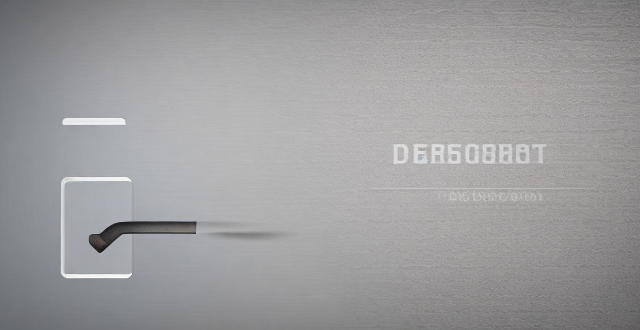
What are the main types of power batteries used in electric vehicles ?
The text discusses the main types of power batteries used in electric vehicles (EVs), including lead-acid, nickel-cadmium (NiCd), nickel-metal hydride (NiMH), lithium-ion (Li-ion), and lithium-iron phosphate (LiFePO₄) batteries. Each type has its own advantages and disadvantages, such as cost, lifespan, energy density, self-discharge rate, safety concerns, and environmental impact. The choice of battery type depends on the specific requirements and priorities of the vehicle manufacturer and end-user.

How do different ecosystems respond to changes in temperature and precipitation patterns ?
This article discusses the impacts of changes in temperature and precipitation patterns on different ecosystems, including forests, grasslands, wetlands, and arctic tundra. It highlights how these changes can affect plant growth and productivity, species composition, water availability, nutrient cycling, soil erosion, and other ecosystem processes. The article also emphasizes the importance of understanding these impacts to inform conservation and management strategies for ecosystems in a changing climate.

How long do the batteries in a Series Hybrid Electric Vehicle last ?
The lifespan of batteries in SHEVs is influenced by factors like battery type, driving habits, climate conditions, and maintenance practices. Lithium-ion batteries are commonly used due to their high energy density and longevity, lasting typically 8 to 15 years under normal operating conditions. Driving habits such as frequent short trips or aggressive acceleration can reduce battery lifespan. Climate conditions, especially extreme temperatures, also impact battery health. Proper maintenance practices, including regular monitoring and avoiding overcharging, can prolong battery life. Estimating battery longevity involves consulting manufacturer data, monitoring battery health, adjusting driving habits, optimizing climate control, and scheduling regular check-ups. Adhering to best practices can significantly contribute to maximizing the lifespan of SHEV batteries.

What are the advantages and disadvantages of using sodium-ion batteries ?
Sodium-ion batteries have several advantages over lithium-ion batteries, including lower cost, wide availability, and improved safety. However, they also have some drawbacks such as lower energy density, shorter lifespan, and limited research and development. Despite these disadvantages, sodium-ion batteries still have potential for certain applications where cost and safety are important factors.

How is solid-state battery technology improving energy storage ?
Solid-state battery technology is a significant advancement in energy storage, offering advantages such as increased energy density, faster charging times, improved safety, and longer lifespans compared to traditional lithium-ion batteries. This technology employs a solid electrolyte material, allowing for a higher concentration of anode and cathode materials within the cell, resulting in more energy stored per unit volume. Solid-state batteries can provide longer runtimes for electronic devices and electric vehicles without increasing their size or weight. The solid electrolyte used in these batteries has higher ionic conductivity than liquid electrolytes, enabling faster movement of lithium ions between the anode and cathode during charging and discharging cycles. This means that devices powered by solid-state batteries can be recharged in significantly less time than those using traditional lithium-ion batteries. Safety concerns have long been associated with lithium-ion batteries due to the risk of thermal runaway, which can lead to fires or explosions. Solid-state batteries address this issue by eliminating the flammable liquid electrolyte found in conventional batteries. Instead, they use a non-flammable solid electrolyte material that does not pose a risk of leakage or combustion. Additionally, the absence of liquid components reduces the likelihood of short circuits occurring within the battery cell, further enhancing overall safety. Solid-state batteries also boast a longer lifespan compared to traditional lithium-ion batteries. The solid electrolyte used in these batteries is less susceptible to degradation over time, meaning that they can withstand more charging and discharging cycles without losing capacity. This extended lifespan makes solid-state batteries an ideal choice for applications requiring long-term energy storage solutions, such as grid storage systems and renewable energy projects. The benefits offered by solid-state battery technology make it well-suited for a wide range of applications beyond just consumer electronics and electric vehicles. Some potential uses include grid storage systems, renewable energy projects, aerospace & defense, and powering satellites, drones, and other advanced military equipment.